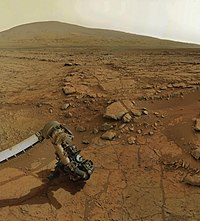 |
| This article is one of a series on: |
| Life in the universe |
|---|
| Outline |
| Planetary habitability in the Solar System |
| Life outside the Solar System |
| Habitability of... |
The NIROSETI (Near-InfraRed Optical Search for Extraterrestrial Intelligence) is an astronomical program to search for artificial signals in the optical (visible) and near infrared (NIR) wavebands of the electromagnetic spectrum. It is the first dedicated near-infrared SETI experiment.[1][2] The instrument was created by a collaboration of scientists from the University of California, San Diego, Berkeley SETI Research Center at the University of California, Berkeley, University of Toronto, and the SETI Institute. It uses the Anna Nickel 1-m telescope at the Lick Observatory, situated on the summit of Mount Hamilton, east of San Jose, California, USA.[3][4] The instrument was commissioned (saw its first light) on 15 March 2015 and has been operated for more than 150 nights, and is still operational today.
- ^ SETI Explores the Near-Infrared. Paul Gilster, Centauri Dreams, 27 March 2015.
- ^ A near-infrared SETI experiment: probability distribution of false coincidences (PDF). Jerome Maire, Shelley A. Wright, Dan Werthimer, Richard R. Treffers, Geoffrey W. Marcy, Remington P. S. Stone, Frank Drake, Andrew Siemion. arXiv. 2014.
- ^ Steven S. Vogt et al., APF - The Lick Observatory Automated Planet Finder, 26 February 2014.
- ^ Cite error: The named reference
Maire 2016was invoked but never defined (see the help page).